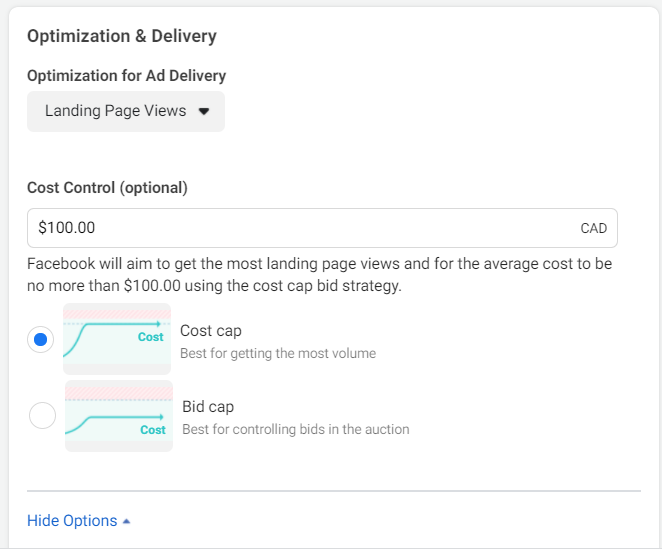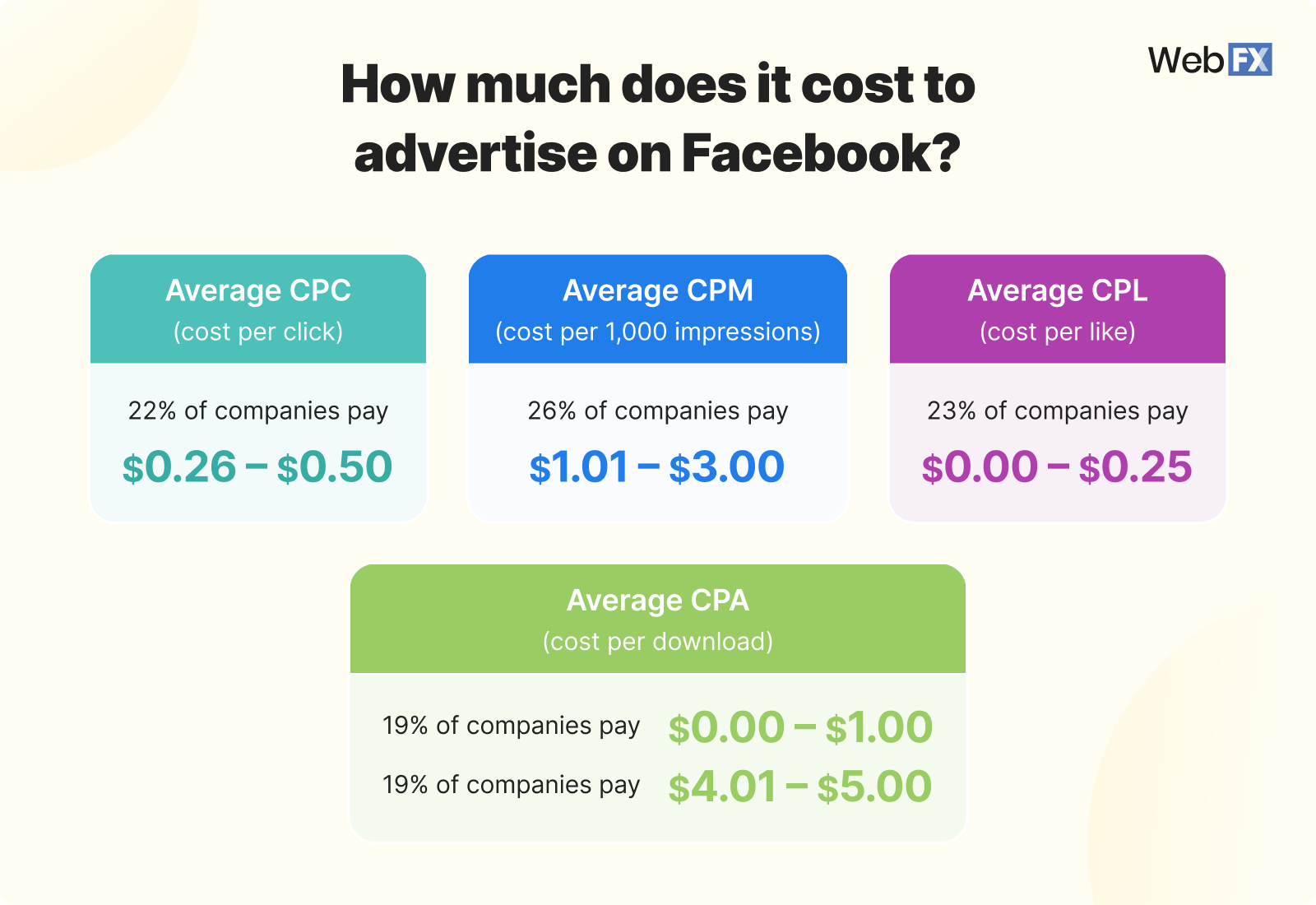To manage Facebook Ads costs, set a clear budget and use targeting options effectively. Optimize ad performance by regularly monitoring metrics.
Managing Facebook Ads costs is crucial for maximizing return on investment. Begin by setting a clear budget that aligns with your marketing goals. Utilize Facebook’s targeting options to reach the right audience and avoid wasting ad spend. Regularly monitor key performance metrics such as cost-per-click (CPC) and conversion rates to identify areas for improvement.
Testing different ad creatives and bidding strategies can also help optimize performance. By staying proactive and making data-driven decisions, you can effectively manage and reduce Facebook Ads costs while achieving your marketing objectives.
Introduction To Facebook Ads
Facebook Ads are a powerful tool for businesses of all sizes. They help in reaching a vast audience. With Facebook Ads, you can target specific groups. This makes advertising more effective and efficient. Understanding Facebook Ads cost management is crucial for success.
Importance Of Facebook Ads
Facebook Ads allow businesses to reach millions of users. They offer precise targeting options. You can target based on age, location, interests, and behavior. This ensures your ads reach the right people. Increased visibility and brand awareness are key benefits of using Facebook Ads. Many businesses see a high return on investment (ROI).
Overview Of Ad Costs
Facebook Ads costs vary based on several factors. These include your target audience, ad placement, and competition. You can control costs by setting a daily or lifetime budget. Facebook offers different bidding strategies. These can impact your overall costs.
| Factor | Impact on Cost |
|---|---|
| Target Audience | More specific targeting can increase costs |
| Ad Placement | Premium placements may cost more |
| Competition | Higher competition can lead to higher costs |
Monitoring and optimizing your ads can help manage costs. Regularly check your ad performance. Make adjustments to improve efficiency and reduce expenses.

Credit: adespresso.com
Factors Influencing Ad Costs
Understanding the factors influencing ad costs is crucial for effective Facebook Ads management. Various elements impact how much you spend. Knowing these can help you optimize your budget.
Target Audience
Your target audience significantly affects your ad costs. Facebook allows you to define who sees your ads. Factors like age, gender, interests, and location can impact pricing.
A more specific audience often means higher costs. This is due to increased competition. For example:
- Age: Targeting younger users may cost more.
- Location: Ads in urban areas often have higher costs.
- Interests: Popular interests can drive up prices.
Ad Placement
Ad placement is another critical factor. Facebook offers various placements for your ads. These include:
- Facebook News Feed
- Instagram Feed
- Facebook Right Column
- Audience Network
Each placement has a different cost. For example, the News Feed is often more expensive. But it may also be more effective. Here’s a quick comparison:
| Placement | Average Cost | Effectiveness |
|---|---|---|
| Facebook News Feed | High | Very High |
| Instagram Feed | Medium | High |
| Facebook Right Column | Low | Medium |
| Audience Network | Low | Low |
Choosing the right placement can balance cost and effectiveness. Experiment with different placements to see what works best.
Setting A Budget
Setting a budget for your Facebook ads is crucial. It ensures you don’t overspend. Proper budgeting helps you achieve your marketing goals. Let’s dive into the key aspects of setting a budget.
Daily Vs Lifetime Budget
Choosing between a daily budget and a lifetime budget is important. A daily budget sets a limit on how much you spend each day. This is great for consistent daily exposure. On the other hand, a lifetime budget sets a total spend limit over the campaign’s duration. This offers flexibility on spend rates.
Here’s a comparison table to help you decide:
| Budget Type | Advantages | Disadvantages |
|---|---|---|
| Daily Budget |
|
|
| Lifetime Budget |
|
|
Cost Control Techniques
Managing ad costs is crucial for your budget. Here are some techniques:
- Set Spend Limits: Ensure you don’t overspend.
- Use Bid Caps: Control how much you pay for each click.
- Monitor Performance: Regularly check your ad performance.
- Adjust Your Audience: Target the right audience to minimize waste.
These techniques help you stay within your budget. They also optimize your ad performance.
Bidding Strategies
Understanding Facebook Ads Bidding Strategies is crucial for effective cost management. Choosing the right bidding method can save money and improve ad performance.
Manual Vs Automatic Bidding
Manual bidding allows you to set your own bid amounts. You have complete control over how much you spend per action.
- Pros: You can maximize budget efficiency.
- Cons: It requires constant monitoring and adjustments.
Automatic bidding lets Facebook decide the best bid for you. Facebook optimizes your bid to get the most results.
- Pros: Saves time and reduces manual effort.
- Cons: Less control over individual bid amounts.
Choosing The Right Bid
Choosing the right bid type is essential for your ad’s success. You have several options:
| Bid Type | Best For | Details |
|---|---|---|
| Lowest Cost | Maximizing results within budget | Facebook optimizes to get most results at the lowest cost. |
| Cost Cap | Controlling cost per action | Sets a maximum average cost per result. |
| Bid Cap | Ensuring bids don’t exceed a limit | Sets a maximum bid amount for each auction. |
To choose the right bid:
- Understand your campaign goals.
- Know your budget limits.
- Analyze past performance data.
These steps help in making informed decisions.
Ad Relevance And Quality
Managing the cost of Facebook Ads is crucial for businesses. A key aspect is Ad Relevance and Quality. Ads that resonate well with the audience perform better. They also cost less. This is because Facebook rewards high-quality ads. The platform uses a relevance score to evaluate ads.
Improving Ad Quality
High-quality ads attract and engage users more effectively. Here are some tips to improve ad quality:
- Use clear and engaging visuals
- Write concise and compelling copy
- Ensure your ad aligns with your target audience
Visuals are critical. They grab attention quickly. Make sure they are high-resolution and relevant. Compelling copy is also essential. It should be clear and to the point. Avoid long sentences. Aligning your ad with your audience increases engagement. Know their interests and preferences.
Relevance Score Impact
The relevance score is a metric used by Facebook. It ranges from 1 to 10. Higher scores mean better ad performance. Here’s how it impacts costs:
| Relevance Score | Impact on Cost |
|---|---|
| 1-3 | High cost |
| 4-7 | Moderate cost |
| 8-10 | Low cost |
Ads with a higher relevance score cost less. They also reach more people. This is because Facebook wants to show users relevant ads. Improving your relevance score can save money. It can also increase your ad reach.
Audience Targeting
Effective audience targeting can significantly reduce Facebook Ads costs. By narrowing down your audience, you ensure your ads reach the right people. This maximizes your ad spend efficiency. Two powerful tools for this are Custom Audiences and Lookalike Audiences.
Custom Audiences
Custom Audiences let you target users who already know your brand. These can include previous customers, website visitors, or app users. You can upload your contact list to Facebook. Then, Facebook will match your list with user profiles.
Using Custom Audiences, you can:
- Target past customers
- Retarget website visitors
- Engage with app users
This helps in retargeting warm leads who are more likely to convert. It also ensures you are not wasting money on uninterested users.
Lookalike Audiences
Lookalike Audiences help you find new users similar to your existing customers. Facebook uses your Custom Audiences to create Lookalike Audiences. These new users share characteristics with your best customers.
You can create Lookalike Audiences based on:
- Customer lists
- Website traffic
- App activity
This expands your reach to potential new customers who are likely interested in your brand. Lookalike Audiences enhance ad performance and reduce costs.
Monitoring And Optimization
Managing the cost of Facebook Ads is crucial for businesses. Monitoring and optimization play a key role in this process. By keeping an eye on ad performance and making necessary adjustments, you can maximize your ROI.
Performance Metrics
Understanding the performance metrics is essential. Here are some key metrics to monitor:
- Click-Through Rate (CTR): Measures the percentage of people who clicked your ad.
- Cost Per Click (CPC): Shows how much you pay for each click.
- Conversion Rate: Indicates the percentage of clicks that led to a conversion.
- Return on Ad Spend (ROAS): Calculates the revenue generated for every dollar spent.
| Metric | Description |
|---|---|
| CTR | Percentage of ad clicks |
| CPC | Cost per each click |
| Conversion Rate | Percentage of clicks leading to conversions |
| ROAS | Revenue per dollar spent |
Adjusting Strategies
Based on these metrics, you can adjust your strategies. Here are some tips:
- Analyze your CTR: If low, consider changing your ad copy or visuals.
- Evaluate your CPC: If high, try targeting a different audience.
- Check your Conversion Rate: If poor, optimize your landing pages.
- Monitor your ROAS: If unsatisfactory, review your overall strategy.
Regular adjustments based on these metrics can lead to better cost management and higher returns.

Credit: www.webfx.com
Case Studies
Case studies offer real-world insights into effective Facebook Ads cost management. They provide valuable lessons and showcase successful campaigns. By examining these case studies, businesses can learn practical strategies.
Successful Campaigns
Understanding how businesses achieve success with Facebook Ads is crucial. Let’s look at some standout examples:
| Company | Objective | Results |
|---|---|---|
| Company A | Lead Generation | 50% increase in leads |
| Company B | Brand Awareness | 30% increase in reach |
| Company C | Sales | 20% boost in sales |
These companies used effective strategies to manage their ad costs. They achieved their goals while staying within budget.
Lessons Learned
Learning from others’ experiences can help optimize your Facebook Ads.
- Target Audience: Defining the right audience is crucial.
- Ad Creative: Engaging visuals and text attract more attention.
- Budget Allocation: Distribute your budget across various ad sets.
- Monitoring Performance: Regularly check ad performance metrics.
- Adjusting Strategies: Make changes based on performance data.
Following these lessons can help you achieve better results. Learning from these case studies can save time and money.

Credit: www.akvertise.com
Conclusion
Effectively managing Facebook Ads costs is crucial for maximizing ROI. Monitor performance regularly and adjust strategies as needed. Utilize tools and insights to optimize ad spend. With careful planning and execution, Facebook Ads can drive significant business growth. Keep experimenting and learning to stay ahead in the competitive landscape.






